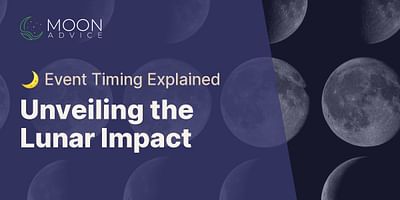Howard Wintheiser is a renowned author and speaker specializing in lunar psychology and its impact on decision-making. Holding a Master's degree in Psychology, he utilizes his deep insights into the human psyche to interpret the moon's influence. Howard's work is widely recognized for its practicality and relevance in day-to-day life.
Dear Reader,
Thank you for reaching out with such an intriguing question about the moon's influence on our seasons and the changing weather. The moon, with its mesmerizing presence in the night sky, holds a profound impact on our planet and its climate. Let's delve into the fascinating connection between the moon and our seasons.
The moon's influence on our weather primarily stems from its gravitational pull on Earth. As the moon orbits around our planet, it exerts a gravitational force that affects the Earth's oceans, creating tides. This gravitational interaction also has a subtle but significant impact on our atmosphere, which in turn affects our weather patterns.
One of the most noticeable effects of the moon on our weather is through its influence on the tides. The moon's gravitational pull causes the ocean waters to rise and fall, resulting in high and low tides. These tidal movements can affect coastal regions, especially during extreme events like spring tides and king tides. While the direct impact of tides on weather is limited, they play a role in shaping coastal climates and can influence storm surges during severe weather events.
Additionally, the moon's phases can indirectly influence our weather patterns. The moon goes through a complete cycle of phases every 29.5 days, transitioning from New Moon to Full Moon and back again. These phases are determined by the moon's position relative to the sun and Earth. During the New Moon phase, when the moon is between the Earth and the sun, its gravitational pull combines with the sun's gravitational force, resulting in higher tides known as spring tides. Conversely, during the First Quarter and Last Quarter phases, when the moon is at a right angle to the Earth and sun, the gravitational forces partially cancel each other out, leading to lower tides known as neap tides.
While the direct impact of lunar phases on weather is still a subject of scientific study, some research suggests a potential correlation between certain moon phases and weather patterns. For example, some studies have found a link between the Full Moon phase and an increased likelihood of thunderstorms. However, it's important to note that these correlations are not universally consistent and can vary depending on geographical location and other atmospheric factors.
In addition to tides and lunar phases, the moon's position in the sky, known as its moon sign, is believed by many astrologers to influence weather patterns. According to lunar astrology, each moon sign is associated with specific elemental energies, such as fire, earth, air, and water. These elemental energies are thought to correspond to different weather conditions. For example, a moon sign in a fire element (Aries, Leo, or Sagittarius) is believed to be associated with warmer and drier weather, while a moon sign in a water element (Cancer, Scorpio, or Pisces) is associated with increased chances of rain or storms.
While the scientific community may not fully endorse the astrological interpretations of lunar influence on weather, many people find value in observing moon signs as a way to connect with nature and enhance their understanding of seasonal changes.
In conclusion, the moon's impact on our seasons and changing weather is multifaceted. Its gravitational pull affects ocean tides, which can indirectly influence coastal climates and storm surges. The moon's phases, particularly during spring and neap tides, may have subtle effects on weather patterns, although further research is needed to fully understand these relationships. Additionally, lunar astrology suggests that the moon's position in the sky, or moon sign, may be associated with different weather conditions. Whether you view the moon's influence through a scientific or astrological lens, it's undeniable that the moon's presence in our sky adds a touch of mystery and wonder to our ever-changing weather.
I hope this answer has shed some light on the fascinating connection between the moon and our seasons. If you have any further questions or would like to explore this topic in more detail, please don't hesitate to reach out.
Wishing you lunar wisdom and a deeper connection with the natural world,
Orion Starfield















